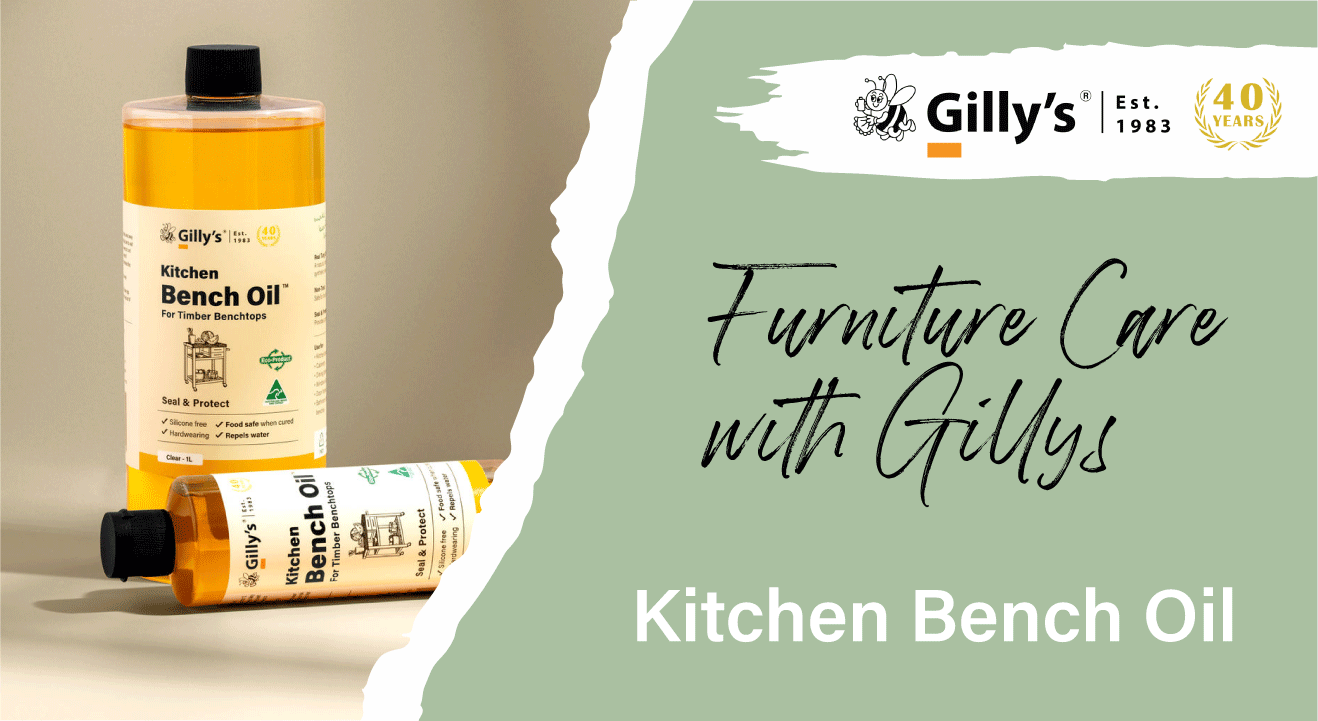
For a restoration project using Gilly’s products, we always recommend cleaning and sanding the timber thoroughly, prior to applying the waxes.

The timber needs to be able to absorb (not unlike a sponge) the initial layer of wax or oil so that splitting and cracking can be prevented in future. The more porous the surface is, the better this absorption will be. So, it’s important to remove as much as possible of any coating that was on the timber prior to restoration, particularly any sort of lacquer, which can be quite persistent.
Firstly, let’s talk about grit and grade. You’ll likely have heard about these terms for different types of sandpaper.
The grade refers to the overall ‘roughness’ of the sandpaper, which consists of grit (the little individual granules that collectively create the abrasive surface).
The basic table below is a guide to understanding the application for each grade of sandpaper.
|
Grade Classification |
Grit Range |
Suggested Uses |
|
Extra Coarse |
12 - 20 |
Suitable for machine sanders, used to remove finishes from timber |
|
Very Coarse |
30 - 36 |
Initial sanding of rough timber |
|
Coarse |
40 - 50 |
Used for removal of paint on furniture or rough shaping |
|
Medium |
60 - 100 |
Shaping wood including the first sanding of soft woods |
|
Fine |
120 - 180 |
Smoothing bare wood |
|
Very Fine |
220 – 280 |
Smoothing finishes between coats |
|
Super Fine |
320 - 600 |
For polishing very hard surfaces, such as ceramics, plastics and stone. |
|
Ultra Fine |
800 - 1000 |
A finishing sand for very hard surfaces |
Secondly, a quick word on grit. There are a few different types of materials that are used to create an abrasive surface. Traditionally, crushed garnet (a naturally occurring rock) was used to make sandpaper (and still is). These days synthetic options such as aluminium oxide, alumina-zirconia and silicon carbide are also used.
The grit refers to the diameter of the individual granules that collectively comprise the abrasive surface. This measurement ranges from 8.4 micrometres (Ultra Fine) through to 1815 micrometres (Extra Course).
For Gilly’s 3 – Step Waxing Process, we recommend using grades 120 – 280 (Fine to Very Fine) unless you are removing a finish such as paint, in which case you’d include 60 – 100 initially. For optimum results, it is important not to skip a grade as each is designed to work with the grade before it.
Other than a full restoration, we also recommend sanding between coats when using our Alfresco Timber Oil and Kitchen Bench Oil.

These can cause the grain to rise, (where the timber becomes rough and 'hairy') which is quite normal and easily remedied by using a 320 or higher grit sandpaper, which will remove the rough edges of the grain without breaking into the next layer of wood cells (and causing further raising of the grain as a result).
Many woodworkers prefer to solve the raising grain problem before any oil is used on the timber. This can be done by spraying a mist of water onto the timber and allowing the grain to raise. Then, a careful sand using the super fine sandpaper usually prevents any further grain raise.
Minor damage to the surface of a piece of furniture, where there is roughness to the touch, can be improved with a light sanding using very fine paper and an application of one of our rich waxes to restore a sheen.

In the case of repairs using the Beeswax Filler Sticks, sandpaper is also recommended to improve the smoothness of the surface, following scraping back the excess wax with a plastic spatula while it is still warm. Sanding is done after the wax has fully cooled. If the repair is done where the surrounding finish is in excellent condition, careful use of very fine (280 or higher) sandpaper is appropriate. Where the filling of gaps is being done on the raw timber, the use of 120 – 280 sandpaper is recommended to remove excess wax. You can find out more about Beeswax Filler Sticks repairs in this blog.
Gilly's support team is available on support@gillysaustralia.com.au for any questions you may have on our products.





Comments
Dear Jorge, unfortunately we don’t have a similar product to this, nor could we suggest a recipe combining varnish and Tung Oil. It’s true that our Pure Tung Oil and other tung oil based products only dry to a matte finish. There are a few products on the market that do combine tung oil and varnish, which enables them to offer a satin or gloss finish. However, as you are aware, we recommend using one of our waxes over the properly cured tung oil based products in our range to impart a high sheen finish.
Thank you for this. It’s very informative and useful.
I used to topcoat with satin PU in most of my pieces, but lately oiling is my go-to finish.
In some pieces I want a more satin/gloss finish (on Harwood) than most oils can provide, and I find that in these cases sanding beyond to 600, 800 and even 1000 grit makes a very noticeable difference.
Incidentally, I once used a product called Teak Oil (oil for outdoor teak furniture) supplied by a company in the USA. I got excellent results with it. I liked it because – unlike Tung Oil, it provides a satin finish without a wax topcoat, but I have not been able to get it again. I think that it may have been a mixture of Tung Oil and Varnish. I got excellent results with it. Does Gilly’s supply a finish like that? Could you suggest a recipe using your pure Tung Oil as a base?